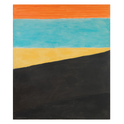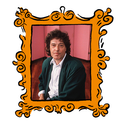Few artists' reputations have plummeted more dramatically than Henry Moore's. In the decades after the second world war, he was regarded as one of the world's greatest sculptors. "England has not for a very long time possessed a sculptor as inspired, independent and consistent," Nikolaus Pevsner wrote in 1945. A few years later, Herbert Read said Moore was "the most inventive and experimental sculptor of his time." By the 1960s, Moore was minted—he paid £1m a year income tax in the mid-1970s and lived on a huge Hertfordshire estate, Hoglands. He virtually invented the market for humongous outdoor sculptures—his reclining figures and mothers-and-children decorate airport forecourts, corporate foyers, public squares and even the entrance to the indoor swimming pool in Wuppertal, Germany. But today Moore is largely dismissed, his oeuvre considered maudlin, repetitive and bombastic. As one critic put it, he is nothing but "a third-rate Picasso."
The Henry Moore Foundation has just launched a massive counterattack, with an ambitious display of 28 of Moore's large outdoor sculptures in Kew Gardens. Moore always wanted his works to be seen as part of a landscape—he often photographed them this way—and the Kew installation is breathtaking. As one walks around the botanical gardens, the swollen limbs and twisted heads of Moore's works bob above the shrubbery, sometimes even the trees, like a Jurassic Park of modernism. In the centre of a smooth lawn amid a clearing of ancient trees sits Large Two Forms, with its weatherbeaten patina, fringed by a bed of soft brown wood shavings. Large Upright Internal/External Form rises up through a long avenue of trees on the way to the pagoda. As you approach it, it looks like an abstract blob, an extraterrestrial giant—Moore's detractors might say an upended turd—but as one swings round to the sculpture's front, it reveals its figurative content: a hooded or long-haired maternal figure holding a thin child in a womblike embrace. Groups of visitors cluster around the bases of the larger works like extras on the set of Metropolis. My favourite work is another elongated reclining figure cast in glowing white resin, which sits on the side of Kew's lake like an inflatable pop Picasso.

The similarities continue. The reputations of both Moore and Smith were the products of aesthetic nationalism. Before the war, the British champions of modernism, led by Herbert Read, needed a British artistic figurehead with whom to fight their cultural war. After the real war, America and Britain needed cultural heroes to sell the story of their recoveries to their own people and internationally. Moore's monumental sculptures were promoted all over the world by the British Council. In the 1950s and 1960s, a suspicious number of bombed-out German towns commissioned public works by the most famous artist of our friendly nation.
But the qualities that made Moore's art so appealing then give it a kind of sickly sweet flavour today. His work is different to that of Picasso and Giacometti in an important respect: the atmosphere of eroticism is entirely absent. In its place is the perfume of sentiment, and it smells a little cheap. As the Kew show reveals, Moore churned out endless sculptures of mothers embracing their children and of curvaceous reclining figures. These universalist feelgood subjects explain much of the postwar market for Moores. Moore espoused a particular syncretic romantic modernism, free of any political content, which was popular with Klee, Kandinsky and Brancusi, but is now out of fashion. This view held that the volumes of the human figure, the shapes of the landscape and the textures of natural forms all contained primal spiritual truths. That's why almost all Moore's sculptures look simultaneously like human bodies, hillsides, pebbles and abstract volumes.
Yet none of this need lead us to dismiss Moore. Today, when so much art is derivative, Moore's lack of originality hardly seems that incriminating. Picasso was a great artist—so great that a handful of artists spent their careers picking up his loose ends. Moore was one of them. Despite his sentimentality, Moore was a formalist who had a sense of the poetry of basic abstract forms. "The first hole made through a piece of stone is a revelation," he wrote, and works like the Double Oval at Kew show that there was a minimalist hidden somewhere underneath the romantic. Moore's oeuvre is truly monotonous, but aren't most contemporary artists one-trick ponies? Neither need we look too harshly on the cheesy emotional strings that Moore pulled. Damien Hirst and Tracey Emin have shown us that sentimentalising modernism—in their cases by making conceptual art about love and death—is a British skill. Perhaps we should learn to be proud of it.











